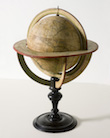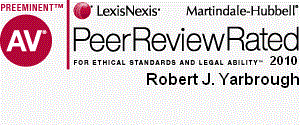Newsletter Issue 22 - December 2010
In this issue:
How to lose foreign patent rights forever
Ask Dr. Copyright - Copyright
'Safe Harbors' part II
Is GM's 'Corvette' a famous trademark?
How to Lose Patent Rights in Foreign Countries Without Really
Trying
Many inventors are not aware that it is supremely easy for a U.S. inventor to lose foreign patent rights even if the inventor's U.S. patent rights are preserved. How does that happen? By publicly disclosing the invention prior to the filing a patent application in the U.S. or elsewhere.
The laws of the U.S. are different from other countries relating to patent rights. In the U.S., the inventor can put the invention on sale, publish a description of the invention and use the invention publicly for up to one year before filing a patent application. The one-year period is known as the 'grace period.' If the inventor files a patent application within the grace period, the inventor's U.S. patent rights are preserved. If the inventor misses the grace period and fails to file the patent application within one year, then the inventor's right to a U.S. patent evaporates and is gone forever.
In most of the rest of the world, there is NO grace period. ANY public disclosure of the invention prior to the filing of a patent application IMMEDIATELY terminates all patent rights, even if the public disclosure is made in the U.S. The loss of patent rights is instantaneous and absolute. Once lost, the foreign patent rights cannot be reclaimed. This instantaneous loss of foreign patent rights on public disclosure of the invention is known as the 'absolute novelty' requirement. We cannot overestimate the importance of the 'absolute novelty' requirement for inventors who wish to protect their inventions outside the U.S.
There are some 200 countries around the world that issue patents, and the laws of those countries are not identical. Of the industrialized countries of the world, only the U.S., Japan, Canada, Russia and Korea allow a grace period of any kind between public disclosure and filing a patent application. The grace period in Japan, Russia and Korea is six months and in Canada it is 12 months. In each of those countries other than the U.S., the grace period applies only where the disclosure is made by the owner of the invention or by someone who obtained the information from the owner.
Some 'absolute novelty' requirements are not as absolute as others. Under the European Patent Convention Article 55, which provides legal authority for the European Patent Office, a grace period of six months applies if a public disclosure is made by someone in breach of a duty of confidentiality or if the public disclosure was a display at an international exhibition.
What kinds of disclosures will qualify as a public disclosure to trigger the absolute novelty bar? In general, any disclosure that teaches someone how to make and use the invention is a 'public disclosure' that will kill foreign patent rights. The disclosure could be in the form of a sale, in the form of a verbal description, in the form of a printed publication, or in the form of use of the invention in public.
So what kind of patent applications will serve to beat the absolute novelty bar? Any of the following will work nicely: a U.S. provisional application, a U.S. utility patent application, a PCT international application, and a patent application filed in any foreign country that is a signatory to the major patent treaties.
THE BOTTOM LINE: If you believe that there is any chance that you
will want to obtain international patent protection for your
invention, make sure that you file a patent application of some kind
BEFORE you make any public disclosure. You'll be glad that you did.
Robert Yarbrough
 Ask
Dr. Copyright...
Ask
Dr. Copyright...
AARGH, Me Hearties! There Be Pirates About, and We Be Needin' a Safe Harbor (Part 2)!
Last month, we heard tell o' the pirates and the lawyers that chase 'em to the gates of perdition (or at least to the local federal courthouse,) with bloggers getting caught in the crossfire on the open sea, holed and sunk by legal briefs and lawyer bills. This month, it's time to run for safe harbor...
You may have a blog, or a WiFi network at home, or at your place of work. Maybe your network is even "open" (no password needed.) Bingo! Under the Digital Millennium Copyright Act ("DMCA"), you're a "service provider" and if you don't want to be liable for the actions of the users of your network or blog, then there are a few hoops you'll need to jump through.
Under the DMCA (Section 512), as a service provider seeking that famous "safe harbor" from liability must:
* Inform customers of its copyright policies
* Follow procedures established for notice and takedown
* Designate an agent to receive DMCA notices
* Register the agent with the Copyright Office
* Lack knowledge of infringement or that the material is on its service
* Take down any infringing materials that it discovers itself
* Not gain any financial benefit from the infringing material
Oh, and that point about registering the agent...you have to get the form from the Copyright Office and send it in with your check for $105.00 to Copyright RRP, Box 71537, Washington, DC 20024.
"So Doc," I hear you thinking, "What if I don't do this stuff?"
A young mother of four in Minnesota was found liable for $62,500 per song downloaded on her computer (24 songs, for a total of $1.5 million) on November 4, 2010. In theory, this penalty could apply to you, even if someone you do not know uses your WiFi Internet connection to download music. There are businesses that watch the Internet, looking for copyright violations and then bringing suit against service providers who have not registered as required, since they do not enjoy the "safe harbor" and often settle out of court, rather than go through the time and expense of a full law suit. One such company, RightHaven, just looks for web sites that repost stories from a Las Vegas newspaper, and has started over 160 law suits!
"So," the Doc says, "better safe than sorry." Ask the attorneys
at LW&H about DMCA compliance procedures. Whether you run a blog,
have a WiFi network, or are just a little paranoid, the registration
with the Copyright Office could be a real headache-saver in the long
run.
Lawrence Husick
General Motors Doesn't Prove that CORVETTE is a Famous Mark ---
but Wins the Race Anyway
The Trademark Trial and Appeal Board ("TTAB") takes on another automobile-related trademark case, this time between General Motors and Jim M. Sweeney, who wanted to register CORVOLTTE to identify "electric vehicles, namely, automobiles."
Of course, general General Motors opposed the registration of CORVOLTTE on grounds of priority and likelihood of confusion with its CORVETTE mark. General Motors alleged that it was continuously using CORVETTE to identify automobiles since 1952. Sweeney admitted General Motors' contentions but denied that there was any likelihood of confusion.
As in most legal proceedings, the parties are required to submit evidence supporting their allegations. General Motors submitted several trademark registrations that were issued by the U.S. Patent and Trademark Office but, surprisingly, did not submit the registration for CORVETTE for automobiles. Why, is anybody's guess. General Motors also submitted to the board an excerpt from "Corvette illustrated Encyclopedia," and from "Corvette America's Sports Car," and a Wikipedia entry for Corvette. Sweeney did not file a brief.
Although extreme deference is accorded to famous marks in terms of the wide latitude of legal protection it receives, and the dominant role fame plays in the likelihood of confusion analysis, the TTAB wrote that it was the duty of the party asserting that its mark is famous to clearly prove it. The TTAB observed that GM had not provided any evidence of sales, advertising or the extent of the Mark's renown and stated that "suffice it to say, [GM's] evidence falls far short of establishing the fame or renown of its CORVETTE mark." In other words, GM's case was a shambles.
So why did the Board decide in GM's favor? From a legal stand
point, the TTAB held that GM's automobiles are so closely related to
electric automobiles as to be legally identical and, therefore, so
were the channels of trade for both vehicles. Also, the marks were
similar with regard to their appearance and sound. The TTAB, held
that "in comparing the marks CORVETTE and CORVOLTTE, we find that
the points of similarity outweigh the dissimilarities such that the
similarities of both marks would be apparent to anyone exposed to
them. Balancing these factors, and despite GM's inability to prove
that it's Mark was famous, the Board held in favor of GM and refused
Sweeney's application for CORVOLTTE.
Adam Garson

